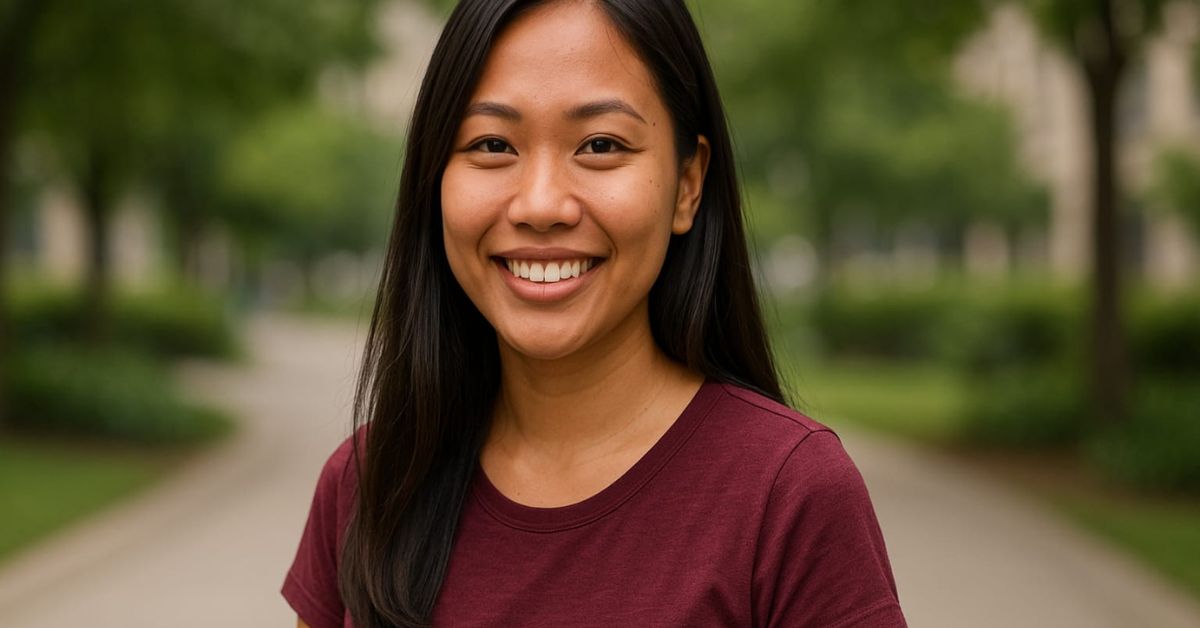Introduction
In the dynamic landscape of today’s interconnected world, cultural identities are constantly evolving — and among the most uniquely resilient and multifaceted is that of the Pinay Asian woman. Rooted in a rich tapestry of Filipino heritage, Southeast Asian traditions, and a modern global outlook, the Pinay woman represents a cultural blend that’s vibrant, strong, and increasingly influential worldwide.
From rising entrepreneurs and international artists to advocates for social change and tech innovators, Pinay women are no longer just confined to outdated stereotypes. They are shaping narratives in the Philippines and beyond. But what truly defines a Pinay Asian woman in this era? How do history, culture, values, and globalization influence her identity?
This in-depth guide will uncover the many layers of what it means to be a Pinay from Asia. Whether you’re a cultural enthusiast, a student of global studies, or simply looking to understand modern Filipino identity, this article aims to provide clarity, rich context, and valuable insight into a thriving and inspiring community.
Who is a Pinay Asian Woman Today?

The term “Pinay” is a colloquial Filipina—a woman from the Philippines—blended with the broader cultural context of being Asian. But in a globalized setting, identity evolves.
Key Traits of the Modern Pinay
- Multicultural Awareness: Many Pinay women grow up exposed to a mix of Eastern traditions and Western influences, especially due to the Philippines’ colonial history.
- Empowered and Educated: Literacy among Filipino women is over 94%, and many pursue careers abroad or higher education.
- Community-centric: A strong focus on family values and relationships often guides life choices.
- Global Citizens: Many live or work overseas, particularly in the US, Canada, Australia, and the Middle East.
Cultural Layers
| Characteristic | Traditional Pinay | Modern Pinay |
| Role in family | Nurturer | Nurturer + Provider |
| Career Outlook | Limited | Expanding across sectors |
| Cultural Identity | Strongly local | Bicultural or global |
In essence, today’s Pinay Asian woman is a global citizen deeply connected to her roots and proud of her evolving identity.
Explore trending Pinay Asian content on Erome—authentic, diverse, and empowering stories from real creators.
History and Colonial Influence on the Pinay Identity
Understanding the identity of Pinay Asian women requires a look back at the country’s tumultuous history—marked by centuries of colonization.
Historical Timeline of Influence
- Spanish Era (1521-1898): Brought Catholicism, gender roles, and Western ideals; shaped conservative views.
- American Period (1898-1946): Introduced English education, women’s suffrage (1937), and liberal aspirations.
- Post-WWII Independence: Boosted national pride; women were central to rebuilding efforts.
Lasting Impacts
- Catholic beliefs influence gender norms and family roles.
- American culture infused ambition and activism among women.
- Nationalism gave rise to the “modern Maria Clara”—a woman who is graceful yet strong-willed.
These layered influences filter into the present—defining how a Pinay walks the line between heritage and modernity.
Pinay Asian Women in Education and Professional Fields
Across sectors, Pinay women are proving their mettle at home and abroad. They’re doctors, engineers, educators, and entrepreneurs, adding significant value to both local and global economies.
Key Statistics
- Over 55% of university students in the Philippines are women.
- Filipino women have the highest participation rate in Southeast Asia in STEM-related jobs.
Sector Highlights
- Healthcare: Nurses and caregivers worldwide, especially in the US and Canada.
- Technology: Rise of female-led startups and involvement in AI, app development, and IT.
- Government & Law: Growing representation in law-making bodies, including senators and mayors.
The Pinay Asian professional landscape is rapidly evolving, pushing beyond stereotypes into fields that matter on a global scale.
Entrepreneurship and the Rise of the Global Pinay
Filipinas are scaling businesses and gaining recognition as purpose-driven founders across industries—particularly in eCommerce, beauty, and sustainable fashion.
Successful Pinay Entrepreneurs
- Rissa Mananquil-Trillo: Co-founder of Happy Skin, a Filipino cosmetics brand now gaining international traction.
- Mikaila Rubio: A young Pinay social entrepreneur advocating for rural women’s rights in digital business training.
Why Pinay Businesses Stand Out
- Cultural ingenuity: Strong storytelling and authenticity in branding.
- Community focus: Business models often involve giving back to communities through fair trade or skills training.
- Digital fluency: Embracing online platforms like Lazada, Etsy, and Shopify.
These women are not only building wealth but re-defining what success looks like for aspiring Asian entrepreneurs globally.
Beauty, Fashion, and the Redefinition of Standards
Western beauty norms have long dominated the media, but Pinay Asian women are now reclaiming their narrative and redefining what beauty means through cultural pride and inclusivity.
Traditional vs Contemporary Standards
| Attribute | Traditional Ideal | Modern Trend |
| Skin Tone | Light/fair | All tones celebrated |
| Hair | Long, straight | Natural textures, dyed, or bold styles |
| Attire | Modest & demure | Fusion of modern and traditional |
Influencers Changing the Narrative
- Heart Evangelista (fashion icon, artist)
- Asia Jackson (Fil-Am model advocating for #MagandangMorenx, celebrating morena skin)
The evolution of beauty ideals shows how cultural confidence is emerging as a defining trait among the new generation.
Family and Relationships: Expectations vs Reality
In Filipino culture, family remains at the core of personal values—but modern readjustments have altered how relationships and roles are viewed.
Traditional Expectations
- Marry young
- Be the primary caregiver
- Prioritize family over career
Modern Realities
- Delayed marriages for educational or career pursuits
- Shared family roles with partners
- Women choosing singlehood or childless lifestyles
Real-Life Contrast
Maricel, a 32-year-old software developer in London, supports her parents in Baguio while co-parenting her adopted child with her partner—a lifestyle that wouldn’t have been possible just a generation ago.
Pinay women today are writing their own life scripts without abandoning their heritage.
Media Representation and Global Visibility
Media has a profound role in shaping identity, and for Pinay Asian women, gaining accurate representation is a key milestone.
Key Platforms
- YouTube: Comedy, beauty, and diaspora channels led by Pinay creators.
- Netflix & International Films: Roles are expanding beyond nannies or love interests to complex leads.
- Miss Universe Pageants: With multiple titles, Pinay beauty queens have become symbols of power and pride.
Breakout Moments
- Pia Wurtzbach’s Miss Universe win in 2015 highlighted Filipino resilience and poise.
- Liza Soberano gaining international buzz for beauty and activism.
Such representations are important for young girls to visualize limitless possibilities.
Challenges Still Faced
Despite enormous strides, Pinay women face layered challenges due to cultural norms, gender bias, and economic disparity.
Common Issues
- Gender pay gap, especially in informal labor
- Stereotyping abroad (e.g., domestic worker narratives)
- Gender-based violence and underreporting in rural areas
Solutions in Motion
- NGOs and grassroots orgs focusing on education and women’s rights (e.g., Gabriela Women’s Party)
- Stronger government policies promoting gender equality
- Youth activism promoting mental health and personal safety
Awareness of these challenges is the first step toward creating more informed support systems and real change.
Pinay Asians in the Diaspora
Millions of Pinay women live abroad, balancing two (or more) identities while facing bias, isolation, and opportunity.
Diaspora Presence
| Destination Country | Est. Pinay Population |
| United States | 2.1 million |
| Saudi Arabia | 750,000 |
| Canada | 900,000 |
Key Traits of the Diaspora Experience
- Transnational motherhood: Sending remittances while raising kids via Zoom.
- Cultural hybridization: Holding onto language/tradition while blending into new contexts.
- Dual advocacy: Fighting for both immigrant and women’s rights.
Despite these pressures, Pinay women maintain a deep sense of identity and pride.
The Future of the Pinay Asian Voice
The future is bright, bold, and distinctly Pinay. From tech to TikTok, women are asserting influence in emerging industries and changing the narrative of what it truly means to be a woman from the Philippines.
Trends We Expect to See
- More investments in female-led businesses in Southeast Asia.
- Rise of Pinay digital creators globally.
- Empowered voices in climate, politics, and inclusivity.
“We are not just OFWs or beauty queens. We are scientists, coders, teachers, and leaders.” – Tweet from @ModernPinay
This redefinition of the feminine Filipino identity is paving roads for the next generation to be fearless and globally relevant.
Frequently asked questions (FAqs)
What does “Pinay Asian” mean?
It refers to Filipino women, specifically those who identify with both their Filipino roots and broader Asian identity, often in a modern, global context.
Are Pinay women different from other Asian women?
While sharing general cultural values like family and community, Pinay women have a unique blend of Spanish, American, and Southeast Asian influences, giving them a distinct identity.
What industries do modern Pinay women thrive in?
They are prominent in healthcare, education, entrepreneurship, entertainment, and tech, both in the Philippines and internationally.
Are Pinay women traditionally homemakers?
Traditionally, yes. However, this is changing rapidly. Many now balance careers, entrepreneurship, and education while still valuing family life.
How can I support the Pinay community?
Buy from Pinay-led businesses, amplify their stories, engage in cultural learning, and support programs advocating for women’s rights in the Philippines.
Conclusion
The identity of the Pinay Asian woman is a rich, dynamic, and resilient story of past, present, and future. She is not only a symbol of cultural heritage but also of progress and empowerment. Whether leading boardrooms, raising families, creating art, or organizing for change, she embodies a unique perspective that deserves recognition, celebration, and support.
Cultural curiosity and global interconnectedness have opened new doors for representation—and Pinay women are walking through them with pride, grace, and strength. By understanding the context, challenges, and triumphs that shape this identity, we foster more inclusive and appreciative global communities.
Want to explore more? Check out interviews with Pinay leaders, support local makers, and read more about Southeast Asia’s rising female voices. The journey of the Pinay Asian woman is just beginning—and we’re all better for being a part of it.
